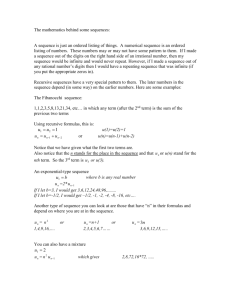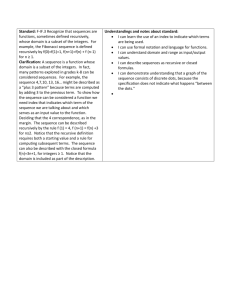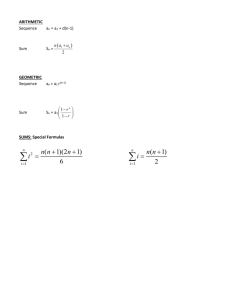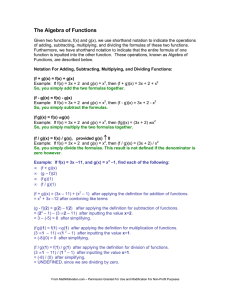Title: 3.02 Function Notation and Graphs Essential Questions 3.02
advertisement
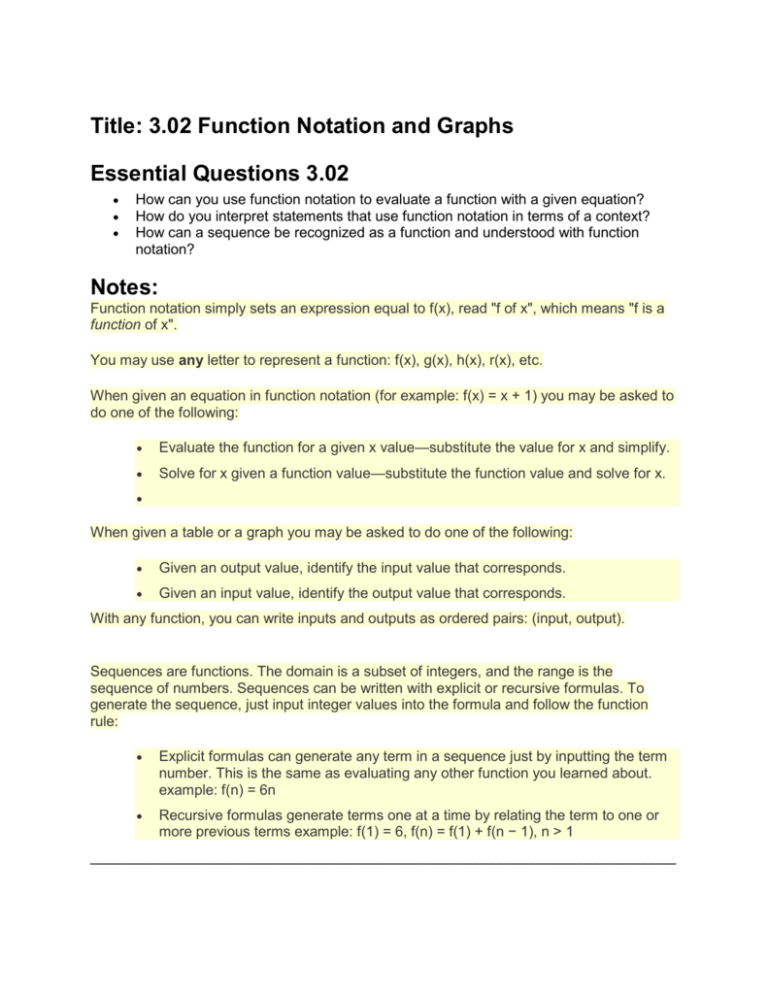
Title: 3.02 Function Notation and Graphs Essential Questions 3.02 How can you use function notation to evaluate a function with a given equation? How do you interpret statements that use function notation in terms of a context? How can a sequence be recognized as a function and understood with function notation? Notes: Function notation simply sets an expression equal to f(x), read "f of x", which means "f is a function of x". You may use any letter to represent a function: f(x), g(x), h(x), r(x), etc. When given an equation in function notation (for example: f(x) = x + 1) you may be asked to do one of the following: Evaluate the function for a given x value—substitute the value for x and simplify. Solve for x given a function value—substitute the function value and solve for x. When given a table or a graph you may be asked to do one of the following: Given an output value, identify the input value that corresponds. Given an input value, identify the output value that corresponds. With any function, you can write inputs and outputs as ordered pairs: (input, output). Sequences are functions. The domain is a subset of integers, and the range is the sequence of numbers. Sequences can be written with explicit or recursive formulas. To generate the sequence, just input integer values into the formula and follow the function rule: Explicit formulas can generate any term in a sequence just by inputting the term number. This is the same as evaluating any other function you learned about. example: f(n) = 6n Recursive formulas generate terms one at a time by relating the term to one or more previous terms example: f(1) = 6, f(n) = f(1) + f(n − 1), n > 1 _________________________________________________________________________ Main Idea (page#) DEFINITION OR SUMMARY Function Notation (p2) sets an expression equal to f(x) Function Rule (p2) Sequences (p8) an expression that tells us how the output is calculated from the input EXAMPLE f(x) = . Find f(____) . an ordered list of numbers, objects, or events. Explicit formulas (p9) can generate any term in a sequence just by inputting the term number. f(n) = Recursive formulas (p9) generate terms one at a time by relating the term to one or more previous terms. f(1) = 6, f(n) = f(1) + f(n − 1), n > 1

